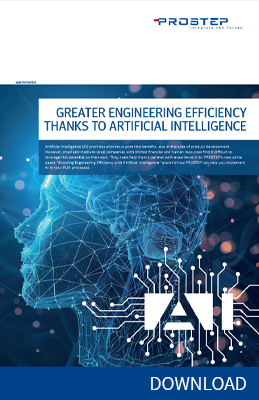
You can download the results of the study entitled
"Industry survey on the maturity of the development of software-driven products" here.
The aim of the joint study conducted by PROSTEP and BHC was to determine the current allocation of roles between PLM and ALM when developing mechatronic and software-driven products and the companies' future strategy for systems lifecycle management (SLM). For this purpose, the study's authors interviewed managers and technical experts from leading companies in the automotive, mechanical engineering, electrical and medical engineering industries. The largest of them had approximately 400,000 employees, the smallest 100.
The study confirmed that the world of development is changing and that the significance of ALM has increased as the importance of in-product software has grown. ALM is increasingly taking the lead over PLM," says Peter Wittkop, PLM Lead Expert at PROSTEP and one of the authors of the study.
However, the study also indicated that ALM has previously only functioned well on its own because the software is less well integrated in the engineering processes than the mechanics or electrics/electronics. "This means that scarcely any company can ensure the full traceability of deliverables across different disciplines, even though most of them consider this a key future requirement," adds co-author Philipp Hasenäcker, managing director of BHC. The PROSTEP subsidiary specializes in (IT-oriented) consulting for PLM and ALM for mechatronics and software-driven products.
Despite the difficulties involved in ensuring traceability, there is no clear trend towards the use of PLM and ALM solutions from a single vendor. This is probably related to the fact that these systems have not yet been integrated to such an extent that their use promises an advantage over a best-of-breed strategy. In addition, other criteria such as the cloud capability of the solutions for example play a role when selecting an ALM solution. A mix of all known IT solutions can therefore be found in PLM-ALM integration initiatives, without these integrations always supporting the objective of end-to-end traceability.
